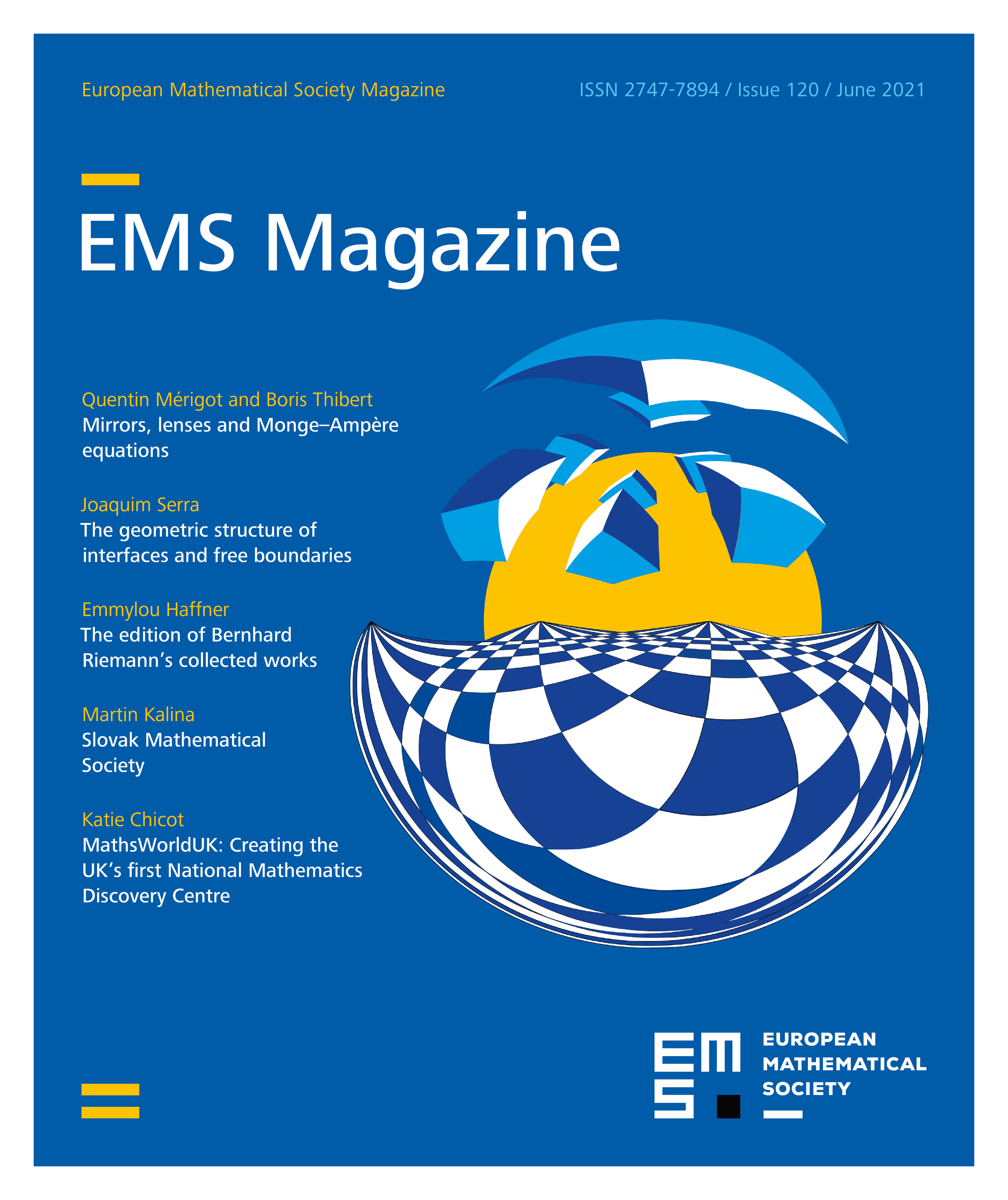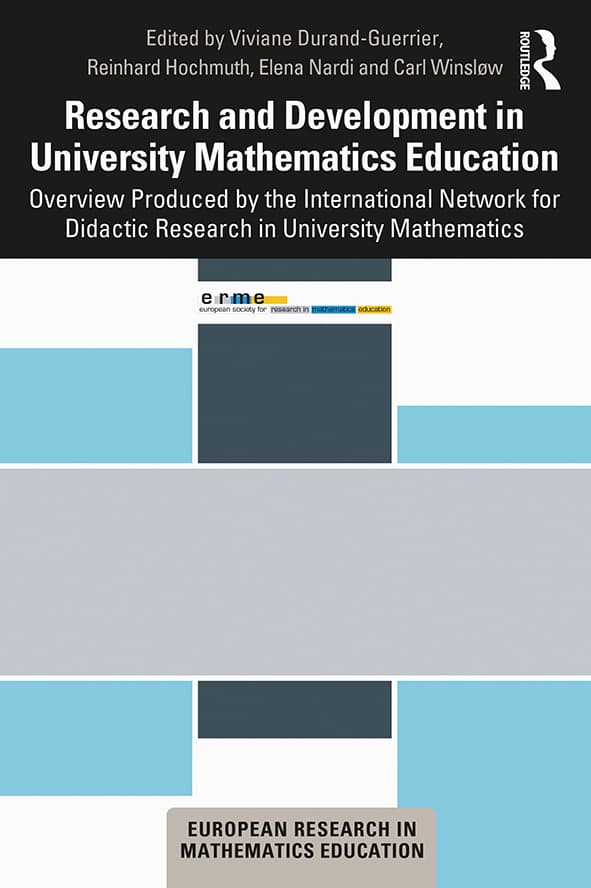Regularly presented by Jason Cooper and Frode Rønning.
In this issue, with a contribution by Viviane Durand-Guerrier, Reinhard Hochmuth, Elena Nardi and Carl Winsløw.
Report on the book Research and Development in University Mathematics Education. Overview Produced by the International Network for Didactic Research in University Mathematics.1www.routledge.com/Research-and-Development-in-University-Mathematics-Education-Overview-Produced/Durand-Guerrier-Hochmuth-Nardi-Winslow/p/book/9780367365387 Edited by V. Durand-Guerrier, R. Hochmuth, E. Nardi, and C. Winsløw
All rights reserved.
This book emerged from the activities of the research project INDRUM (International Network for Didactic Research in University Mathematics, hal.archives-ouvertes.fr/INDRUM). INDRUM is a network that developed out of ERME, and the network aims to contribute to the development of research in didactics of mathematics at all levels of tertiary education, with a particular concern for the development of early-career researchers in the field and for dialogue with university mathematicians. The INDRUM network has been initiated by scholars strongly involved in CERME conferences, and the INDRUM conferences have been labelled ERME Topic Conferences.
The aim of the book is to provide a deep synthesis of the research field as it appears through two INDRUM conferences, which took place in 2016 and 2018. The book addresses seminal theoretical and methodological issues and reports on substantial results concerning the teaching and learning of mathematics at university level, including the teaching and learning of specific topics in advanced mathematics across a wide range of university programmes.
The first part, Achievements and current challenges, contains four chapters based on the two plenary lectures and two plenary panels at the two conferences. Chapter 1 (Artigue) reflects achievements and challenges of research in mathematics education at university level, pointing at the strengths of this research, and the promising developments as well as the challenges it faces. Chapter 2 (Lawson and Croft) presents lessons for mathematics higher education from 25 years of mathematics support, relying on the authors’ extensive experience in the centres for excellence in university-wide mathematics and statistics support. Chapter 3 (Bardini, Bosch, Rasmussen, and Trigueros) presents three case studies of interactions between mathematicians and researchers in didactics of mathematics and points out directions that seem important to strengthen. Chapter 4 (Winsløw, Biehler, Jaworski, Rønning, and Wawro) focuses on the education and professional development of university mathematics teachers. New ideas and practices for discipline and context-specific teacher preparation and for identifying and rewarding quality teaching are proposed.
The second part, Teaching and learning of specific topics in university mathematics, contains five chapters. Chapter 5 (Trigueros, Bridoux, O’Shea, and Branchetti) addresses challenging issues in the teaching and learning of Calculus and Analysis, covering research on one variable functions and multivariable functions as well as research on more advanced topics. Chapter 6 (Vandebrouck, Hanke, and Martinez-Planell) presents the various theoretical perspectives which underpin studies on task design in calculus and analysis. The authors call for further exploration, documentation and discussion on assessment and for incorporation of technologies, beyond current research, on the formalization of basic notions. Chapter 7 (Chellougui, Durand-Guerrier, and Meyer) explores the relationships between discrete mathematics, computer science, logic and proof. The authors demonstrate the need to deepen epistemological analysis and interdisciplinary didactical engineering in this area. Chapter 8 (Hausberger, Zandieh, and Fleischmann) presents a unified approach to the didactics of abstract and linear algebra in terms of structural and discursive characteristics, aiming to overcome the fragmented status of current research. Chapter 9 (González-Martín, Gueudet, Barquero, and Romo-Vázquez) focuses on mathematics for engineers, mathematical modelling and mathematics in other disciplines, and addresses the challenges of defining, designing, motivating and assessing mathematics teaching and learning for students who are not specializing in mathematics.
The third part, Teachers’ and students’ practices at university level, contains three chapters. Chapter 10 (Hochmuth, Broley, and Nardi) addresses issues on transition to, across and beyond university, including the transition from university to workplace, with an emphasis on the need for more substantial research on the last two types of transition. Chapter 11 (Rasmussen, Fredriksen, Howard, Pepin, and Rämö) focuses on students’ in-class and out-of-class mathematical practices, use of resources out-of-class, roles in assessment practices and responses to active learning initiatives, in relation to interactions with other students, the teacher, the mathematics, and resources. Chapter 12 (Grenier-Boley, Nicolás, Strømskag, and Tabchi) focuses on mathematics teaching practices at university level, with particular emphasis on teacher learning and teacher knowledge, especially with regard to instructional design for inquiry-based learning. The authors conclude with calling for stronger synergy between the communities of mathematics and mathematics education.
We hope that this book will contribute to the development and dissemination of research in the teaching and learning of university mathematics and to bringing together researchers in didactics of mathematics and the whole community of university mathematics teachers.
Cite this article
Viviane Durand-Guerrier, Reinhard Hochmuth, Elena Nardi, Carl Winsløw, ERME column. Eur. Math. Soc. Mag. 120 (2021), pp. 64–65
DOI 10.4171/MAG/27
